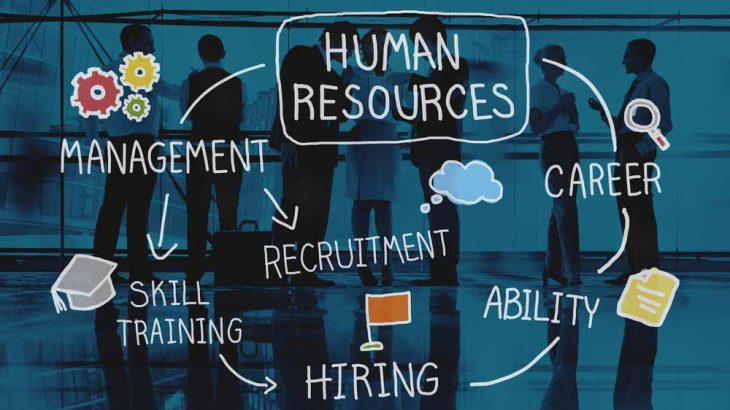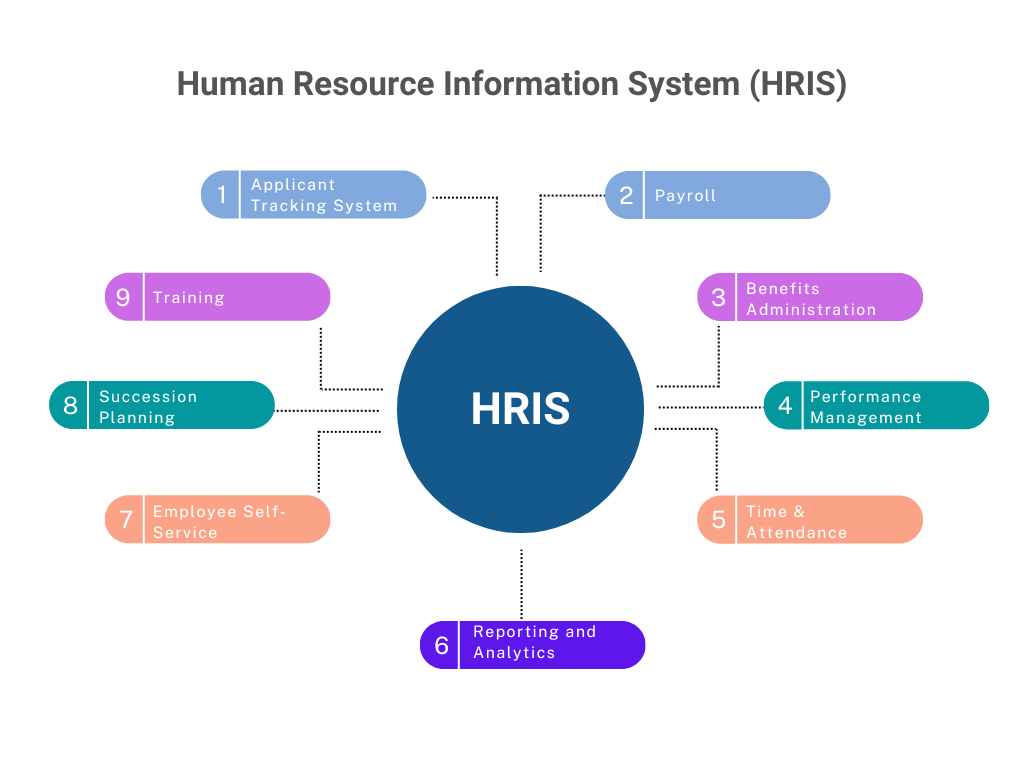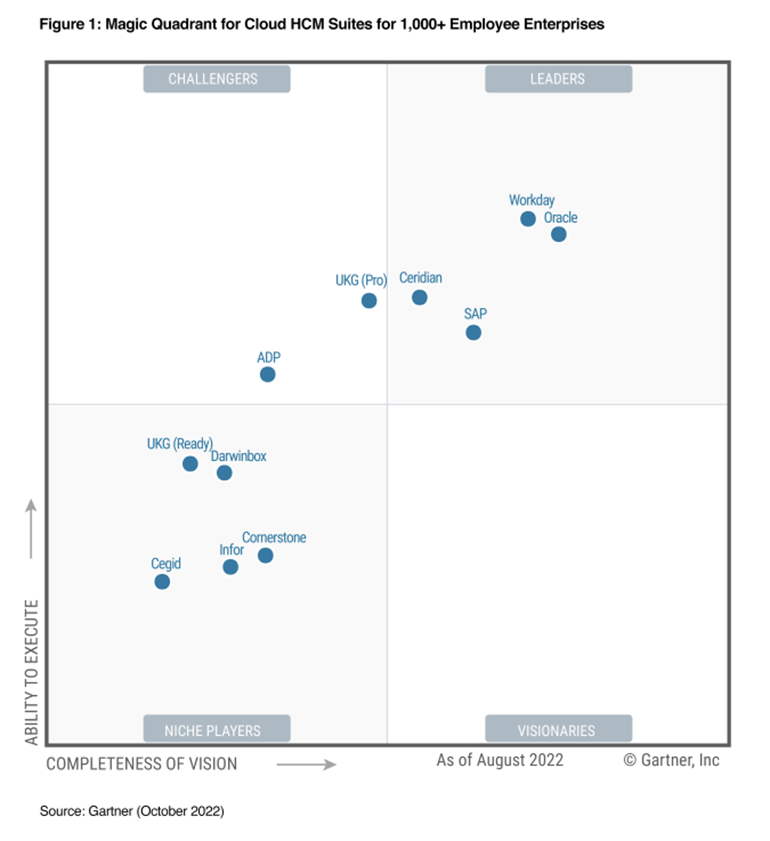
HR
HR compliance is a process of defining policies and procedures to ensure your employment and work... View more
HR Information System (HRIS)- [Updated Oct 2022] An Implementation Guide
-
HR Information System (HRIS)- [Updated Oct 2022] An Implementation Guide
A Human Resources Information System (HRIS) is the most used software in HR. However, when considering an HRIS, it’s crucial to understand the different features it offers. There are countless features to choose from, and the sheer number of options may seem overwhelming. To make your selection process easier, make a list of the features you absolutely need, as well as those you would prefer to have. Ideally, your HRIS would offer all of these features.
HRIS – an important business tool
A Human Resources Information System (HRIS) is an important business tool that helps an organization manage its human resources and business processes. It integrates several processes and systems to ensure that information about employees and business operations are readily accessible to business leaders. The system can also help organizations track their employee performance, develop strategies for improvement, and more. In short, HRIS helps an organization manage human resources more efficiently. To better understand how this technology helps businesses, let’s look at its definition.
An HRIS is a software system that collects data about employees for data-driven decision-making in the HR department. An HRIS analyst is a person who provides support to an HRIS and collaborates with other HR departments. One example of an HRIS is SAP’s SuccessFactors module.
An HRIS is also used to manage employee benefits. Many modern systems let employees choose which benefits they want to receive through their work. This is also known as the cafeteria model. Employees can choose which benefits are most beneficial for them, and they can manage their benefits online.
Benefits of an HRIS
With HRIS, you can automate and streamline processes related to employee onboarding and employee performance. This way, HR teams can redirect their time to engaging with new employees. And, with HRIS, employees can receive timely notifications to complete tasks and sign documents. This helps them get up to speed quickly, resulting in better customer service and a more positive brand image. It also saves time by removing the tedious task of manually entering data.
A good HRIS helps you comply with all federal, state, and corporate laws. It also helps you store your employee data safely and securely. And, it ensures that employees’ time off is in compliance with national and corporate laws. Moreover, HRIS allows you to implement standardized processes, eliminating redundancy and error. And, as an added bonus, it helps you manage your employees better and boost your bottom line.
When choosing the right HRIS for your company, it is essential to consider the features that are most important to you. It is best to choose a HRIS that helps you manage your employees and gives you valuable insights into the trends in your workforce. You should note, however, that no two HRIS services are the same. You should also know that each HRIS provider offers different pricing models, depending on the number of users and features.
In summary, the key benefits an HRIS brings are:
- Record-keeping. An HRIS is a record-keeping system that keeps track of changes to anything related to employees. The HRIS can be seen as the single source of truth when it comes to personnel data.
- Compliance. Some data is collected and stored for compliance reasons. This includes material for the identification of employees in case of theft, fraud, or other misbehaviors, first contact information in case of accidents, citizens identification information for the tax office, and expiration dates for mandatory certification. All this information can be stored in the HRIS. It is essential that data is stored safely and securely, in line with GDPR regulations.
- Efficiency. Having all this information stored in one place not only benefits accuracy but also saves time. Some companies still keep a lot of data about employees as physical paperwork. Finding the right folder, and locating the right sheet, can take up a lot of staff time.
- HR strategy. The HRIS permits the tracking of data required to advance the HR and business strategy. Depending on the priorities of the organization, different data will be essential to track. This is where the HRIS shines.
- Self-Service HR. A final benefit is the ability to offer self-service HR to employees and managers. This enables employees to manage their own affairs. When done right, the HRIS can offer a good employee experience. Keep in mind that not all HRIS systems offer this in a user-friendly manner!
Using an HRIS becomes important when you have over 20 employees.At this time, managing this basic information in spreadsheets like Excel becomes cumbersome and simple procedures like approving employee holidays need to be standardized.
Key Functions of an HRIS
An HRIS encompasses all the functionalities for HR, which include:
- Applicant Tracking System (ATS). This software handles all the company’s recruiting needs. It tracks candidate information and resumes, enables recruiters to match job openings to suitable candidates from the company’s application pool, and helps in guiding the hiring process.
- Payroll. Payroll automates the pay process of employees. Contractual data and information on new hires is often entered into this system – sometimes combined with time & attendance data – and at the end of the month, payments orders are created.
- Benefits administration. Another functionality of the HRIS is benefits management. Employee benefits are an important aspect of compensation and are also managed in this system. More advanced systems offer an employee self-service model for employee benefits. In this case, employees can select the benefits they are looking for themselves. One may want more paternity leave, the other one a more expensive company car. This self-service approach to benefits is also called a cafeteria model.
- Time & Attendance. This module gathers time and attendance data from employees. These are especially relevant for shift workers where employees clock in and out. Back in the day, employees often wrote down their working hours on a piece of paper. Then, the manager would manually enter the data into a time tracking system. Based on this data, payment orders were generated and paid to all employees. Nowadays, workers often check into work by fingerprint or a card that is synced with an HRIS. This gives an exact time for arrival and departure. Any issues with lateness are easily detected.
- Training. Learning and development is a key element when it comes to employee management. This module allows HR to track qualification, certification, and skills of the employees, as well as an outline of available courses for company employees. This module is often referred to as an LMS, or Learning Management System, when it’s a stand-alone. An LMS usually includes available e-learning and other courses to be followed by employees.
- Performance management. Performance management is a key part of managing people. Performance ratings are generated once or multiple times a year by the direct manager or peers of the employee.
- Succession planning. Creating a talent pipeline and having replacements available for key roles in the organization is another key component of an HRIS.
- Employee self-service. Employee self-service has already been mentioned. Organizations are focusing increasingly on having employees and their direct supervisors manage their own data. Requests like holidays can be asked for by the employee him/herself. After approval, these are then immediately saved into the system (and registered to track for payroll and benefits purposes).
- Reporting & Analytics. A much rarer module in HRIS systems is reporting and analytics. Modern systems enable the creation of automated HR reports on various topics like employee turnover, absence, performance, and more. Analytics involves the analysis of these insights for better-informed decision making.
HRIS Reporting and Analytics
An HRIS can streamline HR tasks by automating certain HR processes such as hiring, onboarding, and offboarding. It can also organize data into individual metrics that can be studied to uncover insights. For example, a company can track employee satisfaction, time spent on project, and more. However, HRIS is not a standalone solution for data reporting and analytics since they have been designed as transactional systems. They are databases that record a company’s transactions. An example of a transaction is when new employees join the company.
A new employee record is entered, and the person is considered ‘active’. If a person leaves the company three months later, a new transaction is recorded, setting the person’s status to ‘terminated’.
The fact that these systems are designed as transactional systems, makes them bad at data reporting and analytics. They simply haven’t been designed for this. In addition, not all HRIS systems have all the above capabilities built-in.
Some functionalities, like payroll, LMS, or ATS could also be recorded in external systems. This makes HR reporting even more challenging, as it means that data is dispersed into multiple systems. In order to report data, a new layer needs to be added on top of all HR systems to report and analyze the HR data.
This is another reason why the practical use of reporting and analytics for these systems is limited. Be aware of this when you are talking to HRIS providers, as they often tout their systems to be excellent in data reporting and analytics.
Top HRIS Vendors
When it comes to a human resources information system, it is best to choose a system that has the necessary capabilities to meet your business needs. For example, a good system should allow HR staff to update records on employees and eliminate the administrative burden. This type of software helps a company stay compliant with HR laws and can reduce human error.
The HRIS software market is fiercely competitive; there are thousands of HRIS suppliers to choose from. Gartner’s Magic Quadrant (updated: Oct 2022) below lists the best-known Human Capital Management suits for 1,000+ employee enterprises. These include Workday, Oracle, SAP, ADP, Ceridian, Kronos, and more. Listing all the HRIS suppliers or declaring the best HRIS, would be impossible.
HRIS specialist and HRIS analyst roles
An HRIS analyst is responsible for the administration of a Human Resources Information System (HRIS). These positions require a bachelor’s degree and at least five years of experience in the field. The role also requires a strong work ethic and the ability to provide technical support to employees and other departments. HRIS analysts must have advanced knowledge of SQL queries and database management. They must also have experience using HRM software.
HRIS analysts typically work in an office environment, but can work in the field as well. They may be required to travel to different locations. Most HRIS analysts work in private offices, but some may work in nursing homes or outpatient care centers. They use a variety of skills, including data entry, data analysis, and customer service. In addition, they may need to lift up to 10 pounds.
HRIS analysts work as a team to translate business objectives into technical solutions. They must be adept at communicating complex information and working with various stakeholders to optimize the configuration of the system. As a result, HRIS analysts need a bachelor’s degree in information technology or a related field. They should also be familiar with agile methodologies and system development life cycle processes.
HRIS certification
If you want to pursue a career in the HR department, obtaining an HRIS certification is a great way to gain new knowledge and experience. This certification can boost your chances of getting hired and getting promoted. According to the U.S. Bureau of Labor, individuals who hold these certifications have the best job prospects. While certification is not mandatory, it can make all the difference in your hiring decision.
In addition, an HRIS certification can help your organization develop its future workforce. With such a tool, you can track training and develop an employee’s skills. The training can be offered online or at a classroom. In addition, the training can be customized for your employees. For instance, you can offer incentives to encourage them to complete the training.
To become a HRIS analyst, you must learn all the processes in detail. This is necessary because you will be analyzing data to create recommendations for your company. Having a good understanding of these processes will help you come up with strategies for the company’s growth and employee productivity. You should also know how to integrate new data and analyze it in a way that makes sense.
Steps to implement HRIS
The first step in implementing an HRIS is to educate employees about its features. Training should be a multi-faceted process that includes making sure employees are familiar with the software and its functions. There should also be a defined process for providing feedback and reporting any issues. Once training has been completed, the organization should move into the go-live phase. During this phase, employees should be able to use the new system with confidence.
Implementation should be planned in stages so as to minimize disruption to business operations. Phases include security and IT and connectivity, system integration and data migration, testing, super-user training, usability testing, and communications. The communication plan should include targeted messages for the users and stakeholders.
Data quality is vital to the success of any HRIS implementation. Make sure to understand your current record management system to determine the types of data you need to track and analyze. It is also helpful to meet with department heads and determine their data requirements so that you can customize your HRIS to meet those needs.
Sorry, there were no replies found.


